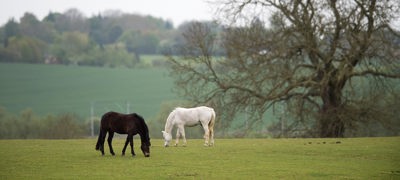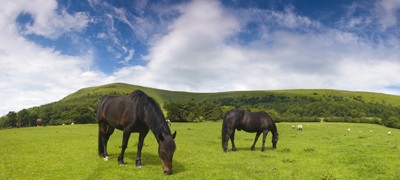Poisonous plants to horses
Remember, it’s best to wear gloves when handling poisonous plants.
It is also good to note that often poisonous plants thrive on poor quality land, making it even more important to maintain good pasture.
Foxglove
- Grow up to 2 meters tall
- Flowers are purple-pink, hanging, tubular structures which are 4-5 cm long
- Flowers appear from June to September
Toxin and clinical signs of poisoning
chevron-down
chevron-up
Contains cardiac glycoside toxins1.
Clinical signs include:
- Cardiovascular: changes to heart rate and breathing difficulties
- Digestive: diarrhoea
- Neurological: dilated pupils, tremors and fits
Prognosis and treatment
chevron-down
chevron-up
- Death from foxglove poisoning can occur after just a few hours1.
- Contact a vet as soon as you suspect foxglove poisoning.
- If caught early enough, a vet may use activated charcoal and mineral oil to flush out the toxins1.
- Treatment options are limited as the toxins can immediately damage a horse’s cardiovascular system.
Prevention
chevron-down
chevron-up
- Ensure good forage is available as horses don’t usually eat foxglove unless other food is unavailable.
- Keep horses away from areas of foxglove growth.
- Remove any foxglove found on your pasture immediately (it’s important to note that toxicity remains even when the plant is dried and dead1).
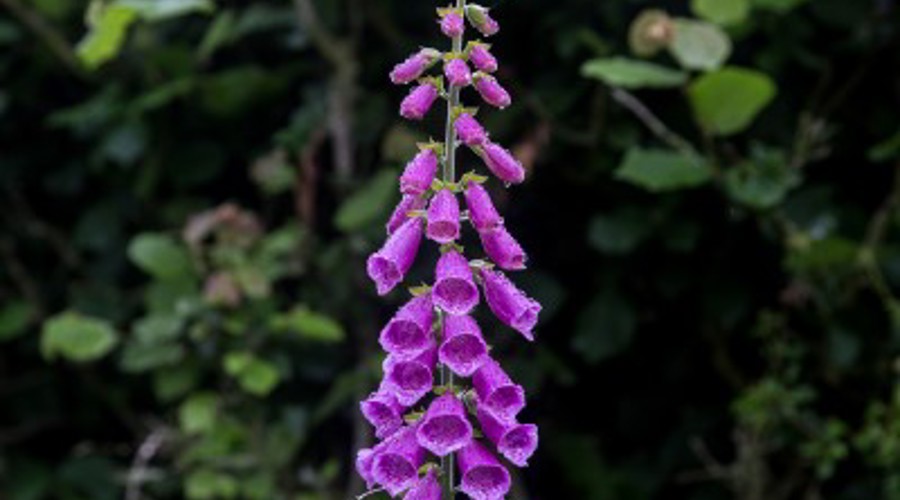
Deadly Nightshade
- Grow up to 1.5 meters high
- The leaves can grow up to 20cm long
- The flowers are most often a dull brown-purple colour and grow up to 3 cm long
- The fruit is a shining black berry
Toxin and clinical signs of poisoning
chevron-down
chevron-up
Contains atropine alkaloids, present in all parts of the plant especially stems and leaves1.
Clinical signs include:
- Dilated pupils and blindness
- Changes to heartbeat
- Muscle tremors
- Disorientation
Prognosis and treatment
chevron-down
chevron-up
Death from deadly nightshade intoxication is rare.
However, you should always call a vet for supportive treatment.
Prevention
chevron-down
chevron-up
Horses rarely eat deadly nightshade as they find it distasteful.
Remove any deadly nightshade found by pulling or digging it up.
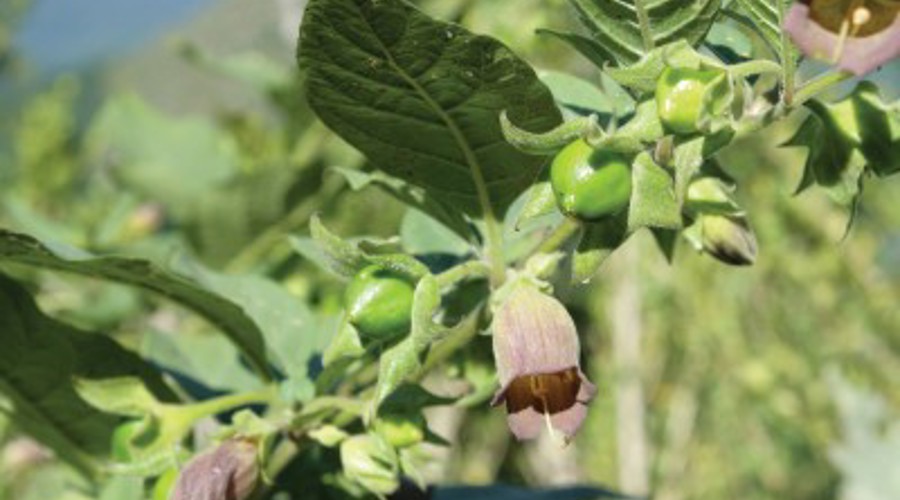
Ivy
- Leaves are dark green and often triangle-shaped
- Grows in vines
Toxin and clinical signs of poisoning
chevron-down
chevron-up
Contains triterpenoid saponins and polyacetylene toxins that harm horses.
Clinical signs include:
- Diarrhoea
- Colic
- Skin irritation around the mouth
- Loss of appetite
- Dehydration
Prognosis and treatment
chevron-down
chevron-up
- Death from ivy poisoning is rare.
- However, you should contact a vet as soon as you suspect your horse has eaten ivy to treat the symptoms and prevent any further toxin damage.
Prevention
chevron-down
chevron-up
- Horses rarely eat ivy as they find it distasteful.
- Keep horses away from areas where ivy grows,
- Remove any ivy you find.
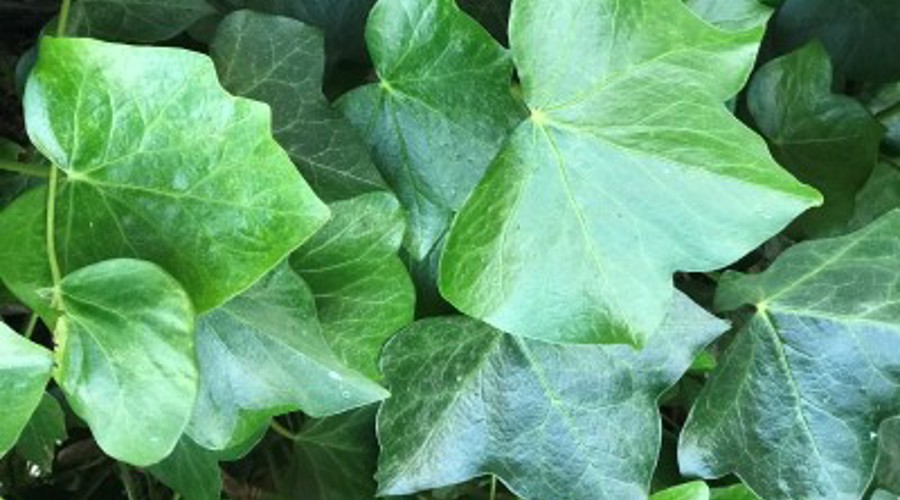
Yew Trees
- Are evergreen trees or bushes, growing up to 20 meters
- The thick trunk is a red-brown colour with scaly and peeling bark
- Leaves are dark green, typically 1-3 cm long and needle-shaped
- Young leaves are bright green
- Often have red berries
Toxin and clinical signs of poisoning
chevron-down
chevron-up
Yew contains the deadly toxin Taxine, a cardiotoxin that causes a heart attack1.
Clinical signs include:
- Sudden collapse is sometimes the only sign
- Breathing may begin to sound like groaning
Neurological: muscular trembling and uncoordinated movements1
Prognosis and treatment
chevron-down
chevron-up
- Death by taxine poisoning can occur instantly.
- Contact a vet immediately if you suspect your horse has eaten yew
Prevention
chevron-down
chevron-up
- Yew tastes bitter and horses don’t usually eat it unless other forage is in short supply, such as in winter.
- Keep your horse well away from any yew plants.
- Be aware that toxicity remains in clippings and dead plants1.
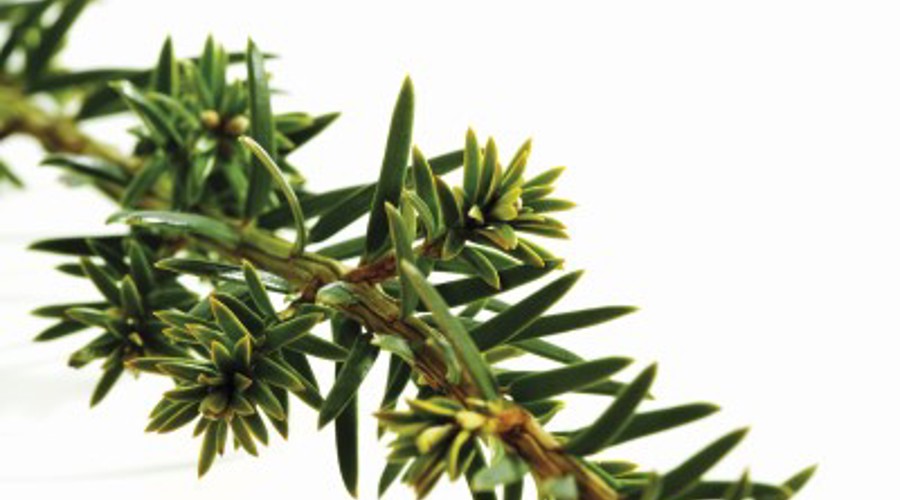
Laburnum
- Usually grow to 7-8 meters
- The bark is smooth and a grey or olive-green colour.
- Produces bright yellow drooping flowers
Toxin and clinical signs of poisoning
chevron-down
chevron-up
Contains the toxin Cytisine, present in all parts of the plant, but especially the seeds2.
- Digestive: colic and diarrhoea
- Neurological: drowsiness, excessive salivation, fitting, collapse and coma2
Prognosis and treatment
chevron-down
chevron-up
- Contact your vet immediately for supportive treatment If you suspect your horse has eaten laburnum.
- Your vet may use activated charcoal, liquid paraffin and fluids to flush the toxin out2.
Prevention
chevron-down
chevron-up
- Horses don’t usually eat laburnum, unless they are short of other forage, as it tastes bitter.
- Keep your horses away from areas where Laburnum trees grow or fence off the area around the trees to avoid access to it.
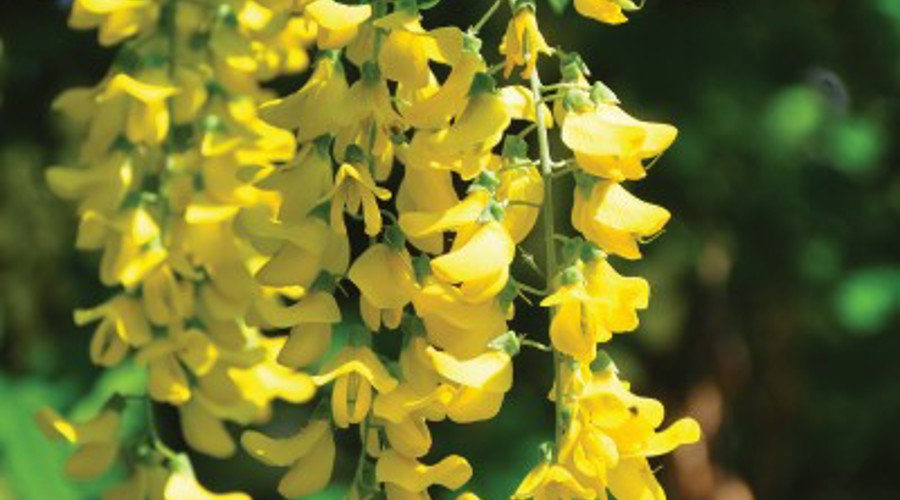
References
chevron-down
chevron-up
- Cheltenham Equine Vets. 2018. Plants Poisonous to Horses. Available from: https://cheltenhamequinevets.co.uk/wp-content/uploads/2018/02/Plants-poisonous-to-horses.pdf
- Simon Constable’s Equine Vets. Laburnum Poisoning. Available from: https://equine-vets.com/health/l/laburnum-poisoning/






